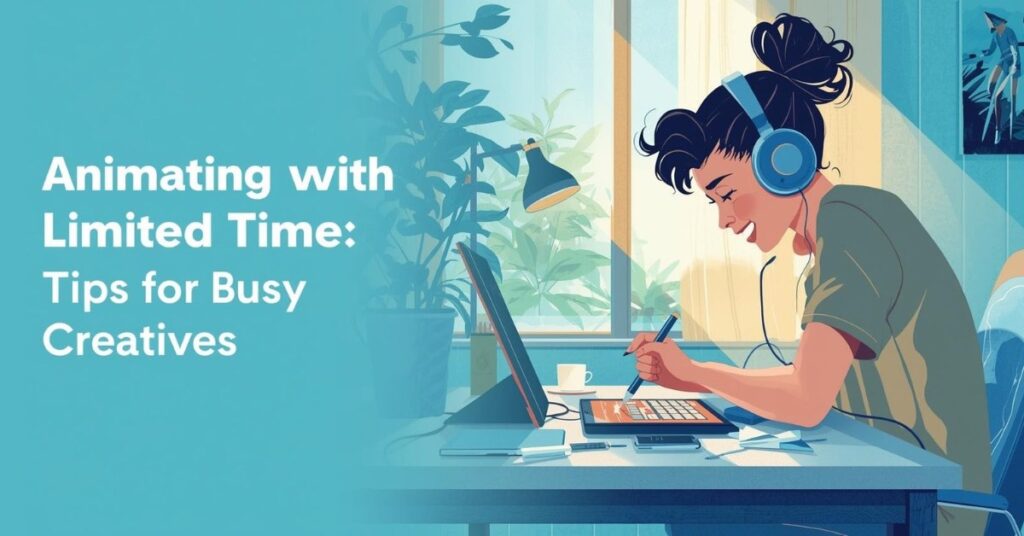You want to learn animation, but your calendar is stacked—work deadlines, family commitments, maybe even night classes or a side hustle. The dream of long studio sessions feels impossible, and every time you sit down, the clock is already ticking. I can relate, because I’m learning animation as an adult too, and carving out time isn’t easy. But here’s the good news: you don’t need endless hours to make progress. With the right mindset and strategies, even a busy schedule can become fertile ground for creativity.
Shift from Hours to Minutes
A lot of beginners think you need a full afternoon to get better. But small, consistent sessions—just 15 to 30 minutes—stack up faster than you think. One scene, one drawing, one idea refined every day adds up to real skill. It’s like watering a plant: you don’t need a flood, just a steady trickle to keep it growing.

Try setting a timer and treating short sessions as non-negotiable. Knowing you only have a window of minutes can also help you focus sharper than when you have hours of undefined time.
Use Constraints as Creative Fuel
Being busy forces you to think smaller—and that’s not a weakness, it’s an advantage. Limit yourself to a bouncing ball, a hand gesture, or a ten-frame cycle. These micro-projects cut overwhelm, but still train your eye for timing, spacing, and appeal.
Constraints push you to choose wisely. A short loop teaches you far more than staring at a blank canvas waiting for “perfect” inspiration.
Batch and Prepare
When time is scarce, preparation is gold. Instead of scrambling for ideas, keep a notebook or app with micro-prompts ready: a walk cycle, an eye blink, a flag in the wind. That way, when your 20 minutes appear, you’re animating immediately instead of brainstorming first. Prepped ideas turn chaos into clarity.

This habit not only saves time, it trains your brain to look for animation inspiration everywhere—in movies, on the bus, or even while waiting in line.
Protect Your Creative Energy
It’s not just about finding time, but defending it. Tell friends or family you’re “in a session.” Close tabs, silence notifications, and use headphones as a visual do-not-disturb sign. Guard your focus the way a chef guards their knives—because once it dulls, everything slows down. Protecting your energy ensures your limited time translates into meaningful progress.
Want guidance and accountability while learning in short bursts? Structured courses can help turn scattered minutes into steady growth.
Final Thoughts
Animating with limited time isn’t about doing less—it’s about making every minute count. Focus on consistency, embrace constraints, and prepare your prompts ahead of time. Even with a packed schedule, you can keep your creative spark alive and moving forward one drawing, one loop, one small win at a time.




























